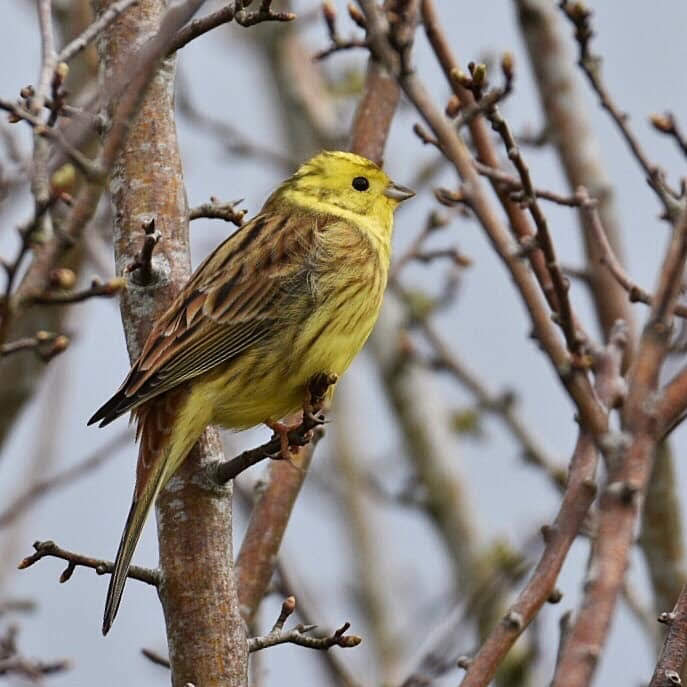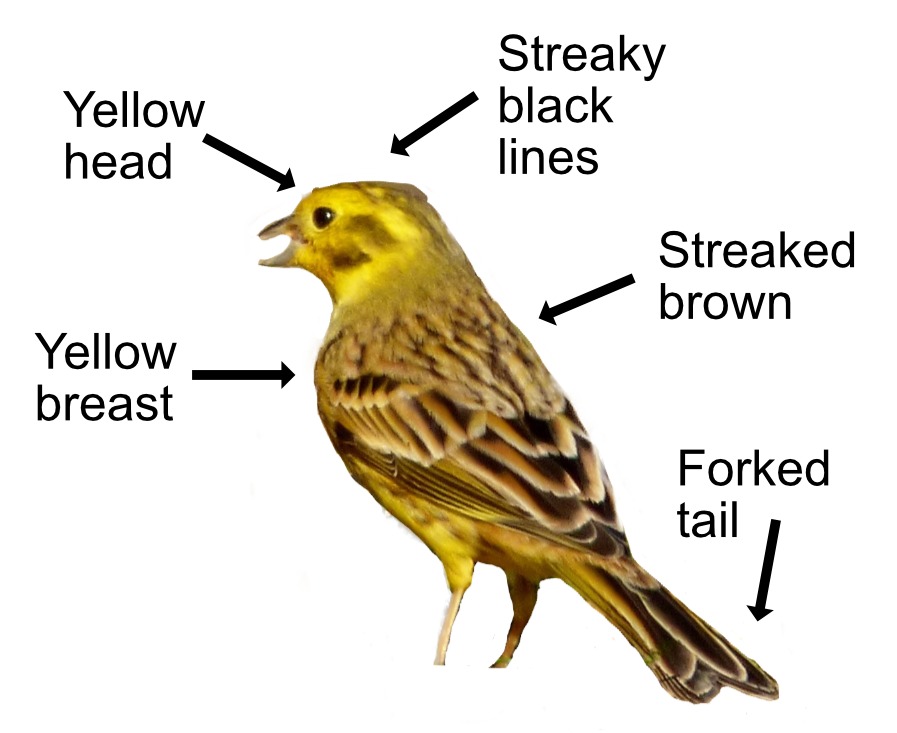
Like the Yellow Wagtail, the Yellowhammer is, how shall we put it, yellow! He is high-vis, although a bit grubbier from lots of hedgerow work and having so many wild fondue parties. Once you locate him from his "a little bit of bread and no cheese" song, you will wonder how you ever missed something with such a bright yellow head. He has inspired poems by Robbie Burns and John Clare, and his cheese song has even influenced musical works by Beethoven and Messiaen.
The Yellowhammer is slightly larger than a house sparrow. The male has a bright yellow breast and head with some streaky blackish lines. The back is a rich streaked brown with a chestnut rump and a longish forked tail. The female is less yellow and more stripy. In winter, the yellow becomes more obscured by green brown streaks, making it blend in more with other winter birds and much harder to spot.
The Yellowhammer just loves to sing about how much he likes cheese, standing proudly upright and banging on about it. Despite the song, he is more of a seed eater, feeding mainly on the ground, with the odd insect thrown in during the summer.

The Yellowhammer has 2 to 3 broods between April and September. The female builds a nest close to the ground from grass, plant stems and moss. She sits on the 3-5 eggs while the male sings from the hedge top about how proud he is and let's have a cheese party. The eggs are patterned with a mesh of fine dark lines, giving rise to the old name for the Yellowhammer of "scribble lark" or "writing lark". The eggs hatch after 13 days and the youngsters are cared for by both parents. They can fly 11 days later. The boy birds learn the family cheesy song from their fathers as Yellowhammers have their own regional dialects. The songs are similar but end with minor differences. The girl birds fancy the boys that share their dialect and enjoy the same local dairy produce.
Yellowhammers love open countryside with bushes and trees. There are about a million territories throughout Britain, though these have declined a lot in recent years. The decline is thought to be due to more efficient farming and reduced availability of seed rich stubble fields in winter. The Yellowhammer is resident all year and seldom moves far. They form loose flocks in winter with other buntings, finches and sparrows. The oldest recorded bird was 11 years old, which shows there is no harm in a nice bit of Wensleydale.
Their Latin name is 'emberiza citrinella' where 'emberiza' is derived from the Old German 'Embritz' for bunting and 'citrinella' is the Italian for a small yellow bird (as opposed to citronella which is the stinky stuff in candles and 'stinky bunting' wouldn't be a good name at all). The English name is thought to have come from 'Ammer', another German word for a bunting.